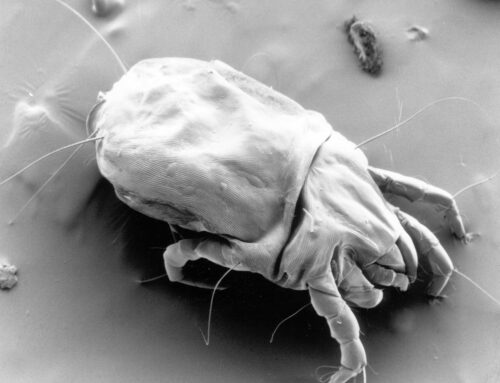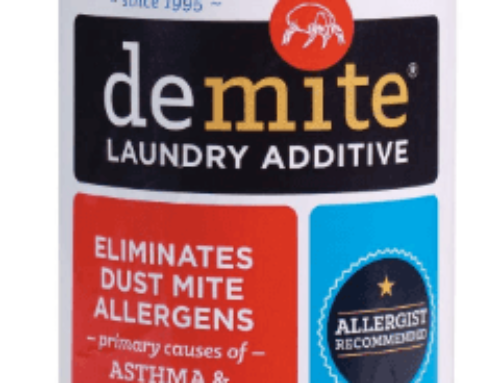Table of Contents
Dust mites are pesky, microscopic organisms that set up base on upholstery, mattresses, and other soft surfaces. As they feed on dead skin flakes, animal dander, and hair, you can’t truly eradicate a dust mite infestation from your home, but this doesn’t mean you can’t limit the problem to a more manageable scale.
One of the most effective tools to keep dust mites at bay is a good vacuum cleaner. With the right vacuum cleaner at home, you could save your child from a lifetime of respiratory problems and allergic reactions. In today’s guide, you’ll learn all about how to choose the right vacuum cleaner for dust mites.
The Vacuum-Dust Mite Dilemma
Experts across the globe argue that the right vacuum cleaner sporting high-efficiency filters is one of the only effective tools you can use to limit exposure to dust mites and common allergens. A team of researchers from the University of Manchester tested this theory in both sealed and open environments. What they found will shock you!
Led by Robin Gore, MD, the research team used some of the latest HEPA-equipped vacuum cleaners to see how they handle dust mites and other allergens. In a sealed environment, it showed exactly what we would expect: microscopic particles were suctioned into the dust cup and/or trapped in the filter without issue.
As soon as they tested these vacuum cleaners in actual homes, they found that vacuum cleaners actually end up scattering more dust mites than they suctioned in, causing them to go airborne and very possibly settling in our lungs. At face value, it appears that vacuum cleaners aren’t the most effective tool to remove dust mites. But is this true?
Do Vacuum Cleaners Work in Removing Dust Mites?
Here’s the thing. Vacuum cleaners, even the most recent releases, aren’t all built the same. Moreover, having a True HEPA Filter actually plays a minimal role in the vacuum’s overall cleaning performance. What are significantly more important in terms of allergen removal like dust mites are the floorhead and beater brush.
The floorhead houses the beater brush which rapidly “beats” against the fibers of a carpet or digs into cracks in smooth floors to dislodge embedded debris, allowing the vacuum’s suction to pick up and remove the loosened particles. If a floorhead creates a near-complete seal around the beater brush, chances are allergens and minuscule organisms will not end up getting tossed across the room and going airborne.
So yes, a vacuum cleaner has the potential to remove dust mites thoroughly and effectively. As for the filter, it is pivotal in preventing dust mites from escaping the vacuum’s suction or dust cup and getting thrown out of the exhaust, not getting tossed to the side of the floorhead.
How to Remove Dust Mites with a Vacuum
Dust mites measure in at about 1/25,000 of an inch or roughly 300 microns wide. Needless to say, spotting them with your naked eyes is nearly impossible, but we can predict where they thrive in our homes.
As we mentioned at the beginning of this guide, dust mites feed on hair and skin cells. Dust mites are typically found in warm, humid places with the largest concentrations of these two things, meaning that upholstery, mattresses, pillows, blankets, carpets, and other soft surfaces that humans and pets use most often are likely harboring dust mites.
When vacuuming above-floor surfaces, switch from the floorhead to the suction hose and one of the cleaning tools (a motorized pet brush is ideal). Go over the surface multiple times with the tool in order to remove as many dust mites as possible. Remember: dust mites don’t bite, so just because you haven’t experienced skin irritation doesn’t mean they’re not currently residing on your pillow.
What You Should Consider
Even though you can’t vacuum your allergies away, the right vacuum cleaner can help you deal with reactions to dust mites and other common household allergens. Here are a couple of the most crucial features that affect a vacuum cleaner’s ability to get rid of dust mites once and for all.
Motor Size and Suction Power
A larger motor produces greater suction pressure that will help in removing both surface and embedded debris from all floor types. There is no specific amperage, horsepower, kilopascal, or air watt rating to look out for—the bigger the motor, the better it is.
Optional Beater Brush or Adjustable Height
Even though the beater brush is the perfect feature to remove embedded debris from soft surfaces, if the floorhead does not create a seal around the brush, you should find a model that comes with an optional beater brush or height adjustment. Additionally, by switching the beater brush off or lifting it off of your floors, you can save yourself a lot of heartache by preventing scratches on floorboards and tiles.
Thinner Side Bezels
If possible, take a close look at the under part of the floorhead and check the width of the side bezels. The thinner they are, the wider the reach of the beater brush which will help clean wall edges and corners a lot easier. Anything that does end up getting tossed to the side can be picked up later on. Of course, you can always switch to one of the cleaning tools to spot-clean corners afterward.
HEPA Filter
A HEPA filter is one with randomly woven fibers that trap all sorts of microscopic particles and organisms, including dust mites. The magic of a True HEPA Filter is its ability to capture particles as small as 0.3 microns up to 99.97% of the time. Combined with a low-hanging floorhead and powerful suction, these filters will increase the vacuum cleaner’s effectiveness in stopping dust mites from being shot back into the air.
Ultraviolet (UV-C)
Some vacuums are built with a UV-C bulb. While UV-C does kill dust mites, the limited exposure when you’re vacuuming means the mortality rate is low. However, UV-C does have an effect on dust mites egg where it prevents the eggs from hatching.
Therefore, it may be good to get a vacuum that’s equipped with UV-C. UV vacuums are usually designed as handheld units and they are particularly useful for removing dust mites in mattresses.
Above-Ground Cleaning
The best vacuum cleaners, upright or otherwise, should be able to clean floors without the slightest hiccup, but how well does it perform on above-ground surfaces? If you’re looking at upright or canister vacuums, try and find a model that comes with a long suction hose and a motorized pet brush. If you’re in the market for a stick vac, a lightweight unit will make overhead cleaning a breeze.
Final Thoughts
Symptoms of a dust mite infestation include sneezing, itchy nose, and congestion. If you experience any of these symptoms regularly, you might be in the presence of the nearly invisible allergen. Luckily, with the right vacuum cleaner at home, you can limit your exposure to the pests. In this guide, we’ve explained in detail how to choose the right vacuum cleaner for dust mites. Stay safe, everyone!




Leave A Comment